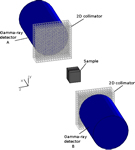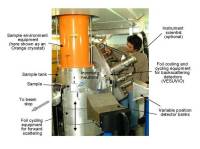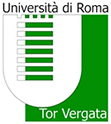The simulation group develops Monte Carlo simulations to study neutron related techniques. Simulations are used to study the feasibility of the neutron logging technique for cultural heritage applications, improve the neutron capture prompt gamma activation analysis, and investigate the sources of gamma ray background in pulsed neutron source facilities. The simulations are based on the well-estiblished Geant4 and ROOT codes.
Topics:

Neutron-gamma logging is a nuclear technique based on measurements of gamma radiation emitted after excitation by a neutron source. The technique involves the use of a source of neutron radiation and a gamma detector lowered in a borehole. Neutrons produced by the neutron generator are slowed down through scattering with the nuclei of the material surrounding the borehole and are eventually absorbed. The gamma radiation yields information on the materials present in the irradiated volume and, in principle, can be used to sample unexcavated area and spot the presence of buried archeological artifacts. The technique has been successfully applied in mining industry and geology. We investigate the feasibility of the technique for applications in cultural heritage by using Monte Carlo techniques. A simulation model of a neutron logging system based on Geant4 has been developed to this aim.
Neutron capture prompt gamma activation analysis

Neutron capture prompt gamma activation analysis (PGAA) is a non-destructive analytical technique that provides information on the isotopic composition in samples. It based on the measurements of gamma-rays following neutron capture. The pattern of gamma-rays, ranging from hundred keV to 12 MeV, is unique for each isotope. The PGAA method has been applied in materials science, chemistry, geology, mining, archaeology, environment, food analysis, and medicine. A current limitation of the technique is gamma-ray self-absorption. Attenuation of gamma-rays within the sample itself that may lead to significant errors. We plan to exploit the gamma-ray self-absorption and investigate the feasibility of using low energies gamma-rays (< 1 MeV) to localize inclusions. Spatial distribution of elements has recently been measured by scanning a sample with a collimated neutron beam and by using a collimated gamma detector. Drawback of the technique is the high collimation of source and detector needed and the long beamtime required. Our method will make use of the full neutron beam area and allow for a fast localization of the inclusions. Information on position of the inclusion could be used to correct for the self-absorption and obtain more precise quantitative analysis. The studiy of the feasibility of the method and the optimization of the detectors’ geometry are carried out with Geant4 based Monte Carlo simulations.

Spallation neutron sources offer an unique opportunity for fundamental and applied science. The wide neutron spectrum produced from the spallation reaction ranges from meV to several MeV. At the ISIS pulsed neutron source, neutrons in the meV – eV region are employed, among other techniques, for diffraction and inelastic scattering. Neutrons in the eV-keV region are utilized for neutron imaging. High energy neutrons (MeV region) are used for electronic devices testing. One aspect to be considered in all applications is the gamma ray background. A clear estimation of the background and identification of the sources is of prime importance to increase the signal to noise ratio. We are developing a simulation tool based on Geant4 to investigate the sources of gamma radiation inside the blockhouse and reduce their contributions to the measurements.
Collaborators:
Christopher Frost, PhD, ISIS
Giuseppe Gorini, PhD, University of Milano Bicocca
Publications:
- A. Miceli, G. Festa, R. Senesi, G. Gorini, E. Perelli Cippo, R. Cattaneo, C. Andreani, “On-site Neutron Logging for Cultural Heritage Applications: a Monte Carlo Study’”, Submitted to Proceedings of the 17TH CHNT (2013)
- P. Schuetz , A. Miceli , I. Jerjen , A. Flisch, J. Hofmann, R. Broennimann, U. Sennhauser, Reducing environmental scattering in industrial computed tomography by system redesign, NDT & E International, (In press)
- P. Schuetz, A. Miceli, A. Flisch, I. Jerjen, J. Hofmann, U. Sennhauser, Strategies for the reduction of environmental scattering in X-ray Computed Tomography, Proceedings of Conference on Industrial Computed Tomography (2012)
- A Miceli, J Glister, A Andreyev, D Bryman, L Kurchaninov, P Lu, A Muennich, F Retiere and V Sossi, Simulations of a micro-PET system based on liquid xenon, Phys. Med. Biol. (2012)
- A. Berdondini, R. Brancaccio, V. D’Errico, A. Miceli, M. Bettuzzi, F. Casali, M. P. Morigi, M. Senn, A. Flisch,The Use of Industrial Computed Tomography in the Study of Archaeological Finds, 37th International Symposium on Archaeometry (2011)
- Pietropaolo, A., Cippo, E., Gorini, G., Tardocchi, M., Schooneveld, E., Andreani, C., et al., Gamma-Ray background sources in the VESUVIO spectrometer at ISIS spallation neutron source.Nucl Instrum Meth A (2009)
- A Pietropaolo, M Tardocchi, E Schooneveld, R Senesi, Characterization of the gamma background in epithermal neutron scattering measurements at pulsed neutron sources, Nucl Instrum Meth A (2006)


